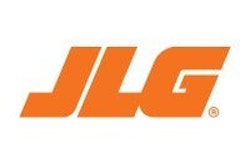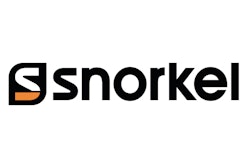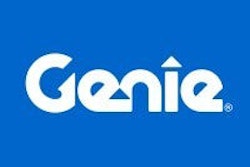The current economic downturn has been particularly hard on the aerial work platform market. We talked with leading manufacturers about the state of the industry and its future. Here's what they had to say:
Q: The past couple of years have been challenging for the aerial market. How would you characterize the current state of the industry?
A: Tim Ford, president, Terex AWP - While things have stabilized, the market is still trying to find the right level of equipment equilibrium to drive time utilization and increase rental rates. In some geographies, there are signs of potential growth over 2009, while in others, we might see continued softness.
A: Melinda Beckett-Maines, national marketing manager, Toyota/Aichi - We feel the market is slowly starting the recovery process. We feel fortunate that we've planned for slow incremental growth at Toyota and have been able to adjust our production with minimal impact.
A: Craig Paylor, president, JLG - Currently, the market is leveling and at a position just off the bottom. Used equipment prices are still very depressed and rental fleets are aging. The limited demand for access equipment tends to be for short-term projects with few long-term jobs available.
A: Alexandre Saubot, chief operating officer, Haulotte Group - After three years of strong growth, the worldwide market for access equipment was adversely effected in the second half of 2008 by a severe crisis that has spared none of the participants in our industry and also affected the worldwide economy. Our entire industry is facing a challenging year. Small industry players will have the difficulty of staying close to their customer, while stronger leaders who have made the decision to be stronger will get to measure the results of their strategy.
A: George Fitchett, vice president-sales, Snorkel - A sharp and sustained downturn is always going to cause a lot of pain. However, it has allowed our industry to become more lean, more focused, and I think much stronger. This is still a relatively young industry and if you look at the last downturn at the beginning of this century, there were a lot of casualties - both manufacturers and rental companies. The industry has proven itself to be much more resilient this time and that, for me, is a very positive sign that we are a sector built on strong foundations.
Most of the major manufacturers were left with a lot of machines on their hands when their big rental customers stopped buying back in 2008. Then, as the construction downturn intensified, those rental companies began selling off large numbers of aerial lifts. It has taken about 18 months for the industry to absorb this influx of used machines and the excess stock held by the manufacturers.
Q: Rental houses have traditionally been a primary market for aerial equipment. Is business picking up at all in this area?
A: Beckett-Maines, Toyota/Aichi - On the forklift side of the industry we have seen some return to interest in purchasing from the national rental companies, but less for the heart-of-the-line AWP products.
A: Paylor, JLG - There are some small increases in demand in a few pockets across the United States. In the global market, Canada is doing slightly better than the U.S., while Latin America, Asia and Australia are showing much more dynamic growth.
A: Saubot, Haulotte - In this period of crisis, all of our customers, suppliers and competitors have been affected and no signs of recovery can be seen so far.
A: Fitchett, Snorkel - I would expect most of the large rental companies will continue to keep a tight control over capital expenditures during 2010. They all bought big during the boom years, so have relatively young fleets of lifts.
However, we are still experiencing strong interest in Snorkel's unique and innovative products; those machines that are the clear market leader, or there simply is nothing like it available anywhere else.
Our goal as manufacturers is to develop aerial lifts that create exciting new and different opportunities for rental companies. At Snorkel, we believe that smaller machines for internal, low-level access have great potential, as they offer the efficiency benefits and cost savings for a lot of interior jobs that are still done with scaffold. Snorkel will be launching an entire new range of these machines at The Rental Show in Orlando.
A: Ford, Terex AWP - Rental houses are reeling from the triple impact of lower utilization rates, lower rental rates and tighter credit constraints. Until the economy strengthens meaningfully, we expect to see mostly retail sales and fleet replacement driving demand.
Q: What do you see in your crystal ball for aerials in the next year; next five years?
A: Paylor, JLG - We expect the industry to grow around 20% in 2010, versus 2009 new equipment demand. The five-year picture should reveal much more aggressive growth, driven by new technology and developing global markets.
A: Saubot, Haulotte - Continued weakness in the worldwide market and confirmation of the wait-and-see approach adopted by many rental customers makes it particularly difficult to predict reliable forecasts for next year.
For the next five years, our market will certainly recover strongly and probably mature - that means concentration of players, both suppliers and customers, with more emphasis on customer proximity, services and innovation with real benefits for users.
A: Fitchett, Snorkel - The aerial lift industry is still experiencing some significant challenges, as we do not expect non-residential construction to pick up until 2011. However, the worst is definitely over.
By 2015, I expect the industry as a whole will be very healthy and vibrant. We will continue to innovate, so there will be a wider array of products, which can only be good for both the rental companies and the manufacturers.
I also anticipate very strong global growth outside of North America; in particular Latin America and China. The U.S. is probably the most mature market in the world for aerial lifts, so there are a lot of opportunities for manufacturers and rental companies as the rest of the world catches up.
A: Ford, Terex AWP - The fundamentals for long-term aerial growth continue to be solid, with developed markets largely dependent on a recovery in commercial construction, government-led infrastructure development and facilities maintenance. In developing markets, economic development, infrastructure growth and an increased emphasis on worker safety will create new demand. We are bullish on the long-term future of the aerial business.
A: Beckett-Maines, Toyota/Aichi - We've all said that aerial lift industry sales can only go up from here. There is truth to that statement. With an approximately 86% drop, our industry was one of the hardest hit, especially with construction and real estate being at the crux of the downturn. The outlook from most sources is for slow, incremental growth over the next 1-2 years and then more pronounced growth from that point forward.
Q: What is your company doing to stay viable in this challenging market?
A: Saubot, Haulotte - Our Group strategy according to what we have stated is to reinforce those two main axes: Customer Proximity - to increase our sales force and reinforce our marketing to better listen to and understand our customers and provide our service structure to bring peace-of-mind to our clients; and Innovative Range - to increase R&D expenses and the rhythm of new product launches.
A: Fitchett, Snorkel - The economic downturn has been a great opportunity for us to closely examine every facet of our business and work to improve it.
We know that our customers are not buying so many new machines, so we have found new revenue streams by targeting their existing fleets. Snorkel has enhanced its Recon program for reconditioning big boom lifts and has aggressively marketed spare parts.
Standard practice is to downsize in a downturn but we have done the opposite; we have added new East Coast and West Coast distribution centers and a network of manufacturers' representatives to help us reach a new audience in the smaller "mom & pop" rental companies.
Most importantly, we are developing some fantastic new products. Along with an entirely new range of smaller lifts for low-level access, we are also using The Rental Show to launch a new family of mid-size boom lifts and a new range of slab scissors, plus some very innovative products that are unique to Snorkel.
A: Ford, Terex AWP - Terex AWP first saw the downturn coming over 18 months ago. Since that time, we have continued to align production with demand. Unfortunately, as a result, we have reduced our workforce substantially, consolidated manufacturing into fewer locations, exited two product lines, implemented a laser-like focus on cash management and reduced discretionary expenditures.
Despite these cutbacks, we have continued to make strategic, customer-facing investments in parts distribution, logistics operations, new products, improved quality, additional services and emerging markets, such as China. Our objective is to provide customers with industry-leading quality and solutions that fit their ever-changing needs, and we will be where they need us when they want us there.
A: Beckett-Maines, Toyota/Aichi - Obviously this is a very tough time for almost all businesses. We are clearly aware of the challenges in the market, and we are dedicated to supporting our customers' needs throughout these difficult times. We are doing everything in our power to assist our customers in remaining as lean, efficient and productive as possible and to offer creative solutions from special financing, dealer-offered incentives, rental and more.
We entered the market when aerial work platform sales slowed significantly industry wide. Toyota and Aichi are both accustomed to long-term, incremental growth and plan to continue that strategy to grow U.S. sales in the future, and we are meeting our market share goals for Aichi even in this challenging market. We also have worked diligently to control our own costs and remain as lean and efficient as possible during lean times.
A: Paylor, JLG - Rationalizing product, reducing inventory, improving our aftermarket support services and eliminating waste has been and will be a key focus for JLG. We are positioning ourselves to be running lean in all areas and as we emerge from the recession, our focus will be on quality returns and not volume.
Q: What can rental houses focused on aerial equipment do to stay afloat during this economic downturn?
A: Fitchett, Snorkel - The best advice my father gave me was "never give any advice to anyone!"
Our industry is very progressive and forward-thinking. I think most rental houses see the downturn as an opportunity as much as a challenge. Many in the aerial lift rental industry are already looking at new opportunities and the buzz word is "diversification" - diversifying sales into new sectors outside of construction, or diversifying their aerial work platform product range to reach new customers. The core construction business will come back in good time, but the smart rental companies are already working on growing their sales in other areas, so we all become a little less reliant on just one sector.
A: Ford, Terex AWP - The two most important things any business can do right now - rental company or otherwise - are to manage cash and pricing. We see an increasing number of customers with unhealthy levels of debt caused by being overextended during good times, and exacerbated because pricing has declined to a point where they can't cover their expenses.
Rental companies need to get sized appropriately - and that means fleet, people and lines of business - to weather this storm. It doesn't help anyone to chase rental rates down in hopes of increasing utilization. We won't see a healthy rental industry again until rental rates recover, and while many rental houses have taken the necessary steps of closing branches and reducing their workforce, more needs to be done.
Customers need to manage their fleet in total by understanding when to sell, when to refurbish and when to purchase new. Understanding total fleet profitability - and finding a partner that is interested in helping you manage that way - is crucial in this environment.
A: Beckett-Maines, Toyota/Aichi - Like any business, rental houses need to offer something superior to keep customers returning. Given the slowdown, customer's needs are different. It is imperative that all businesses adapt to meet customers' newest needs whether that be different payment options or more captivating offers (added value, free services with a rental). Also, given the many choices available to consumers, it's absolutely essential to offer the best customer service.
A: Paylor, JLG - Rental companies should look to extend the life of their equipment by partnering with OEMs who offer programs that add years of life to their equipment. They should also reduce the number of brands in their fleet by focusing on quality products from proven manufacturers who can weather current and future economic storms. This focus will allow them to reduce multiple-brand inventories and consolidate their service training needs.
A: Saubot, Haulotte - It is very difficult to give sound advice today to any sector, especially in ours... They could possibly do as we do: Manage their internal costs carefully and focus on innovation that brings needed benefits to the clients, and distinguish themselves through service and careful listening to their customers.
Certainly, avoid "commoditizing" their offers through cheaper machines and cheaper prices. This would bring nothing but more pressure to everyone. This is for sure a temptation with short-term ROI, but the real damage is done in the medium- and long-term ROI, as many industries and services before us have experimented at their own expense.




















